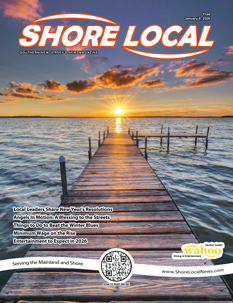By William Kelly
P.F. Kluge’s book “Eddie and the Parkway Cruisers,” and Martin Davidson’s movie, “Eddie and the Cruisers” are two different things. Though Davidson is mostly faithful to Kluge’s storyline, there are some basic differences that should be noted.
Paul Frederick Kluge, who prefers P.F. Kluge, was raised in Berkeley Heights, Union County, and attended Kenyon College in Gambier, Ohio, where he teaches writing today.
“Reading is the breathing and writing is breathing out,” Kluge teaches. “It’s your responsibility as a human being to leave a record behind. Something hasn’t happened until it’s written down.”
After graduate school in Chicago, he entered the Peace Corps and was sent to Micronesia where he spent two years, which inspired him to write his first book, “The Day That I Die,” about a World War II Marine who returns to where he fought in the war. He also co-wrote “The Boys in the Bank” for Life magazine, which was made into the movie, “Dog Day Afternoon” starring Al Pacino.
Kluge says that, “What I write is based on my experiences of a place: its history, character and storytelling possibilities.”
Somers Point and Tony Mart’s aren’t in Kluge’s book, originally published by Viking Press in 1980, with first editions valued at about $100 today.
Kluge spent some time teaching high school in Vineland, as well as a summer working at the Vineland Times-Journal and at a nightclub at the Jersey Shore, experiences that formed the basis for the “Eddie and the Parkway Cruisers” book, about a typical Jersey Shore rock and roll band.
Movies are made because an actor, director or producer with money wants to make it, and in this case, it was because director Martin Davidson read it and wanted to make it. Davidson’s first movie was “The Lords of Flatbush” (1974), about a New York street gang which starred then-unknown Sylvester Stallone and Henry Winkler.
Davidson added a few personal touches to the movie, including the band wearing jeans, t-shirts and leather. Set in the summer of 1962, all of the bands at that time had stage suits, jackets and ties, like Bill Haley and His Comets, Levon and the Hawks and even The Beatles. But that all changed around 1967 with Tito Mambo and The Upsetters, The Monkey Men and what Tony Marotta called “the Animals.” But we can get past that.
When the location scout came to the Jersey Shore to check out the scene, a local Realtor told him about Tony Mart’s, one of the last of the old-style rock and roll nightclubs.
Davidson sat down with Tony and made a deal for him to rent the club as a shooting location for a month, paying what Tony would normally make in that time, shortly after the peak summer season.
A call was put out for locals to appear as extras, ensuring they wore early ’60s clothing. The songlist of the Beaver Brown Band was bought for the soundtrack. The New Hampshire garage band took its name from the Beaver Brown paint cans they sat on in the garage where they practiced. But only saxman “Tunes” Antones made it into the Cruisers band.
When the band arrives at Tony Mart’s they walk in and see Tom Beringer sweeping up with the chairs upside down on the bars. Beringer plays Frank Ridgeway, aka “Wordman,” who was a schoolteacher working at the nightclub for the summer, a character Kluge based on himself.
They announce, “Tell Tony Eddie and the Cruisers are here,” something Tony wouldn’t stand for. If any band actually did that, Tony would have fired them before they ever played a note. That’s because Anthony Marotta was treated with respect and didn’t take any gruff from anybody, especially from some young punks in a band who wanted him to give them a job. Tony fired a band a week. “Get outa here you bums!” was often heard, but Tony wasn’t a character in the movie, though maybe he should have been.
The movie does capture Tony Mart’s as it was in 1982, as well as parts of Somers Point. In one scene zwith the band practicing on the roof, you can see Dick’s Dock and Dolfin Dock in the background, both now gone, and the Clam Bar down the street. There are also scenes of Ocean City’s Ninth Street Beach and Rip Tide Motel, where “Tunes” dies of an overdose, to be replaced in the band by jazz bagpiper and saxman Rufus Harley.
Inside, the main stage was set behind the long bar that ran against the south wall. The second stage, where the house band played, was on the north side and had a brass rail around it.
During the filming of one music scene, I stood behind the cameras, against a wall, when I realized I was standing next to P.F. Kluge himself. We couldn’t talk because of the filming and recording, but I did exchange some emails with him later on, after I read the book.
The biggest difference between the book and the movie is Kluge having Wordman give Eddie a book that inspires him: Walt Whitman’s “Leaves of Grass.” As America’s poet laureate who lived and died in nearby Camden, Whitman has been an inspiration for many. But Davidson replaces Whitman’s “Leaves of Grass” with Arthur Rimbaud’s book, “Season in Hell.” Rimbaud was a radical, controversial poet who destroyed most of his manuscripts in a drunken, drug-crazed frenzy, though his long poem, “Season in Hell” survived.
That’s a big difference, and when I asked Kluge about it, he was a bit philosophical. He said, “They opted for Rimbaud because their Eddie, not mine, vanished and reappeared in the sequel, while my Eddie died. So that biographical connection appeared… the mysterious, charismatic figure, leaving and maybe, probably returning. I much preferred a sweeter, more deeply connected figure in every other way. An American dreamer and New Jersey magician.”
There’s also a chapter in the book that has Eddie driving the Cruisers to Camden to visit Whitman’s still-standing house, and Eddie waxing philosophical about the dichotomy of the old, historic house and the surrounding ghetto of bricks and broken glass where young black kids come to play.
“It doesn’t connect, does it?” Eddie asks. “It came apart somewhere.They don’t know nothing about each other, him and them. Whitman is just a name on a bridge to Philly.”
“Leaves of Grass” in the book became “Season in Hell” in the movie, and the title of Eddie’s last recording, which disappears and is the subject of a mystery and a search.
After the movie came out Kluge wrote an “afterwards” for a new edition of the book which is still in print, where he considers the movie “a flawed but resonant work.”
While the movie bombed at the box office, when HBO aired it on cable TV, a new generation picked up on it, especially the sound track, putting three songs on the pop charts: “Wild Summer Nights,” “On the Dark Side” and “Tender Years,” paving the way for a sequel, “Eddie Lives.”
Since Tom Beringer had become a big star after “The Big Chill,” “Platoon” and “Sniper,” he wasn’t available for the sequel, but it’s not a really bad follow-up.
In a scene I saw being filmed, but one that didn’t make it into the movie, Beringer as Wordman, returns to Tony Mart’s, only to find it closed and boarded up. Shortly after the filming of “Eddie and the Cruisers,” Tony sold the place to Harris Berman, who tore it down and built Egos, billed as a disco, one that failed.
Today, the essence of the Tony Mart’s nightclub is captured on celluloid in Martin Davidson’s movie, and we are lucky to have that.
You can reach Bill Kelly at billkelly3@gmail.com








